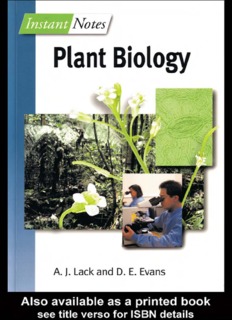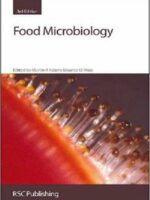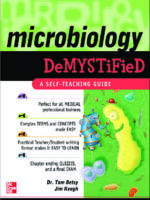Introduction
Plant science has always been a fundamental area of biology, but the emphasis in the subject has changed radically in the last two decades with a plethora of new information, much of it deriving from techniques in molecular biology.
This has deepened our understanding of plant processes and has illuminated almost all aspects of plant biology. The ability to analyze genomes and to transfer genes has opened possibilities for plant biotechnology and genetic manipulation undreamed-of in earlier decades.
There have been advances in ecological knowledge that, with increased awareness of the richness of biodiversity, have shed new light on the relationships between plants, other organisms and their interdependence.
Plant breeders, ecologists and many people outside plant biology have become acutely conscious of the aesthetic and economic value of the resources, so often dwindling, of the plant kingdom. In this book we have covered all these aspects of modern plant biology. We have written it keeping in mind an undergraduate faced with a range of advanced courses, needing an affordable text that gives insight into the whole range of plant science.
Its scope and depth are suitable for a first and second year undergraduate student of plant biology; specialism will need an advanced text. We have also aimed it at molecular biologists and biotechnologists needing an accessible route to understanding the basis of the systems on which they work. It is intended to provide the fundamental background required for true understanding. It should aid undergraduates in their learning and give insight for specialists into areas of plant science not their own. As in all Instant Notes books we have provided ‘Key Notes’ at the start of each section.
These are intended solely as revision notes, e.g. before an exam, to prompt a reader’s memory after reading the section fully. We have kept technical and jargon terms to the minimum needed for understanding; any such term is defined at first mention. We have assumed minimal previous knowledge of biology and hope that the book will prove useful to journalists, environmentalists and those with a genuine interest in the key issues of plant biology as they seek to be informed about the issues that they deal with.
The book is divided into four major sections; structure (Sections B–D); physiology and regulation (Sections E–J); ecology, genetics and wider significance (Sections K–O); and plant diversity (Sections P–R). Throughout we have included insights from modern and advanced techniques and, where possible, explain how understanding is gained. Much of the recent genetic and molecular research has been done on a few key plant species, of which Arabidopsis thaliana (arabidopsis) is pre-eminent.
This small short-lived weed of arable land has become the single best-known plant species and is used as a model for other plants, the ‘Drosophila’ of the plant kingdom. The sequencing of its entire genome was finished as we were writing the final sections of this book. We have used it as an example wherever possible.
Many sections are illustrated with diagrams designed to aid understanding and to be reproducible. Throughout, we have had in mind the needs of undergraduates under pressure to make rapid progress and have sought to supply the essentials upon which good understanding can be quickly built.









Be the first to review “Plant Biology”